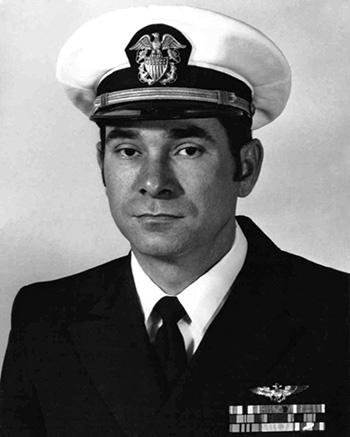
|
Robert Deane Woods |
 |
|||
| Rank, Service | ||||
Commander O-5, U.S. Navy |
||||
| Veteran of: | ||||
|
||||
| Tribute: | ||||
Deane Woods was born on September 30, 1936, in Marley, Idaho, and grew up on a farm in Missouri. He enlisted in the U.S. Navy in February 1957, and served as a yeoman at NAS Los Alamitos, California, until being accepted into the Naval Aviation Cadet Program in April 1958. After completing flight training, he was commissioned an Ensign in the U.S. Navy and designated a Naval Aviator in June 1959, followed by service as an AD-5W Skyraider pilot with Carrier Airborne Early Warning Squadron 11 (VAW-11) at NAS North Island, California, from June 1959 until he left active duty on July 28, 1962. Lt Woods served with VR-881 in the U.S. Naval Reserve at Olathe, Kansas, and at the same time completed his bachelor's degree at the University of Kansas, returning to active duty in the Navy on August 2, 1965. He completed A-1 Skyraider Replacement Air Group training with VA-122 at NAS Lemoore, California, and then joined VA-25 at NAS Lemoore in November 1965. Lt Woods deployed with his squadron aboard the aircraft carrier USS Coral Sea (CVA-43) in July 1966, and was forced to eject over North Vietnam and was taken as a Prisoner of War on October 12, 1966. After spending 2,336 days in captivity, LCDR Woods was released during Operation Homecoming on March 4, 1973. He was briefly hospitalized to recover from his injuries, and then served with VT-21 at NAS Kingsville, Texas, from August 1973 to January 1974, before attending the U.S. Naval Postgraduate School at Monterey, California, from February 1974 to March 1976. CDR Woods' final assignment was on the staff of the Chief of Naval Air Training at NAS Corpus Christi, Texas, from March 1976 until his retirement from the Navy on June 1, 1980. Deane Woods Flew West on August 18, 2022. |
||||
|
||||

